Seconded By: Jean Pierre Rieu,
In Galicia, northwestern Spain, there is a way of life that is slowly disappearing before our eyes—a living narrative that explains who we are, where we come from, and where we are headed. It is the accelerated disappearance of a way of life that has persisted for millennia.
Nearly 2,000 rural villages no longer have inhabitants. Others are following the same path, gradually losing their history. Emptiness is growing, especially in mountainous areas, where a large part of these territories has lost more than 70% of their population in the last 60 years.
Emptiness is changing. Quiet hills are being replaced by the hum of wind turbines.
In this emptiness live those who chose to die where they were born.
The aging population is a huge problem: there are more and more elderly people and, consequently, more deaths, while the number of births continues to decline. There is a demographic death that deserves to be told and documented.
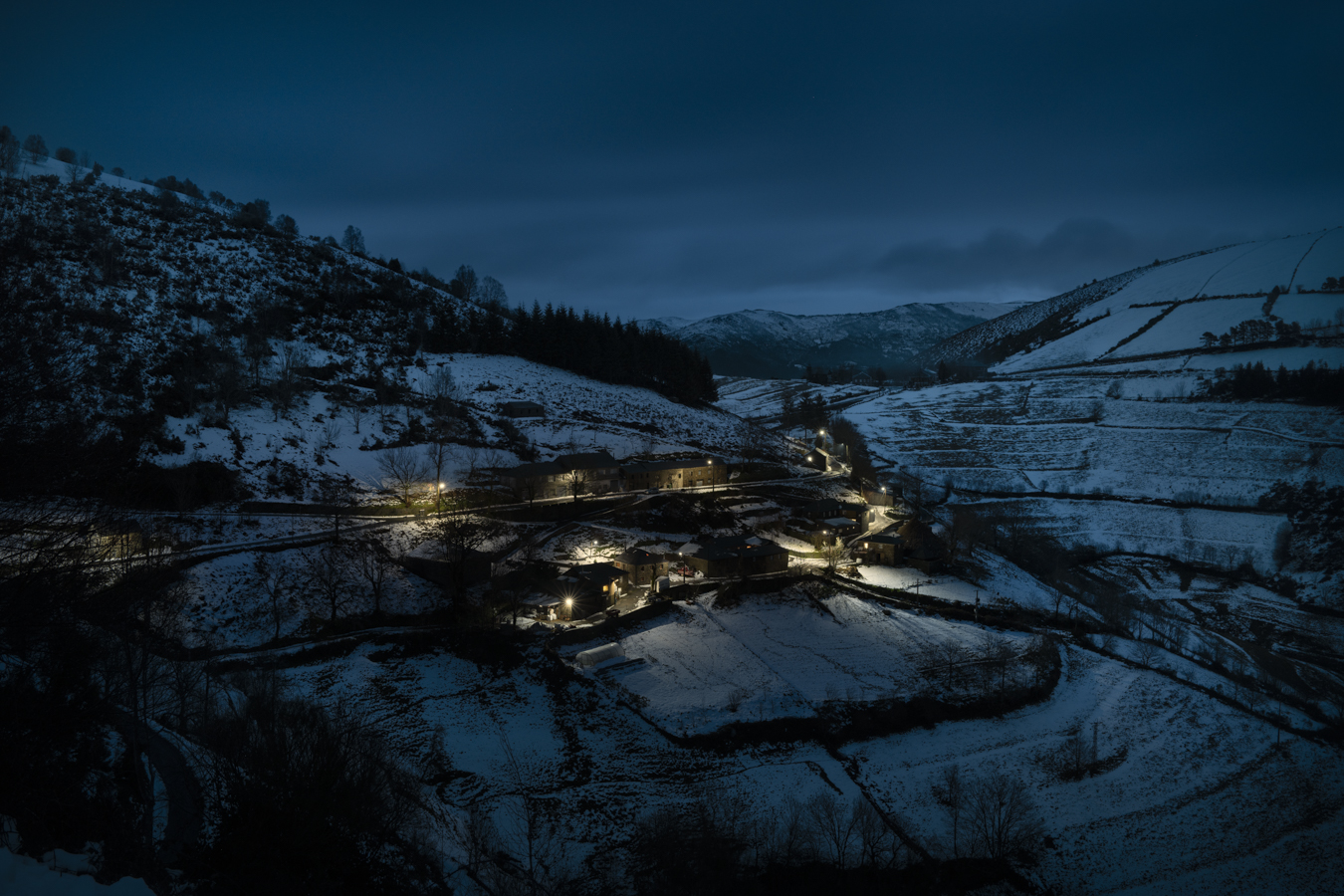
View of the village of Degrada, in Cervantes (Lugo). The villages of Degrada and Cabanas Antigas, in the municipality of Cervantes (Lugo, northwestern Spain), lie at around 1,200 meters above sea level on the Galician side of the Ancares mountains. A lack of services and infrastructure coexists with a growing influx of tourists. While the dwindling local population demands greater institutional support to combat isolation, visitors from the cities are drawn to the area in search of idyllic mountain landscapes and an escape from urban life.

A lamb peeks its snout through the gap of an old door in a village in Cualedro, Ourense, in the northwest of Spain. This image could serve as a metaphor for the situation in rural Galicia. Many times it wants to breathe, but it cannot—it is not allowed to. The decline of the primary sector, essential for these communities, and the lack of effective policies to promote settlement and development in rural areas have worsened depopulation, leaving these regions on the brink of abandonment.

Domingo is almost 90 years old and lives alone in Noceda, in A Fonsagrada, Lugo, in the northwest of Spain. Until recently, he was still using an ox cart that he had made himself. “This was like a desert. There were no roads, there was nothing. I didn’t get married and I stayed here. Now, being alone, you see…” he recalls. A Fonsagrada is the largest municipality in Galicia, with more than 438 km². It has more area than countries like Malta or Liechtenstein. Located in a very mountainous region, it has 600 kilometers of roads, most of which are narrow and winding. In this part of Galicia, the issue of distances is evident, making access to basic services like grocery stores and other types of establishments difficult.

Several parishioners pray during the celebration of a mass in the church of San Bartolomeu de Baldriz, Cualedro (Ourense). The crisis of faith causes difficulties in relieving the older parish priests, who are forced to travel through the parishes until very old age. When rural priests retire or die, some churches close and are left unattended. This situation causes the faithful to lose the temple to go to and have to travel many kilometers if they want to attend a church.
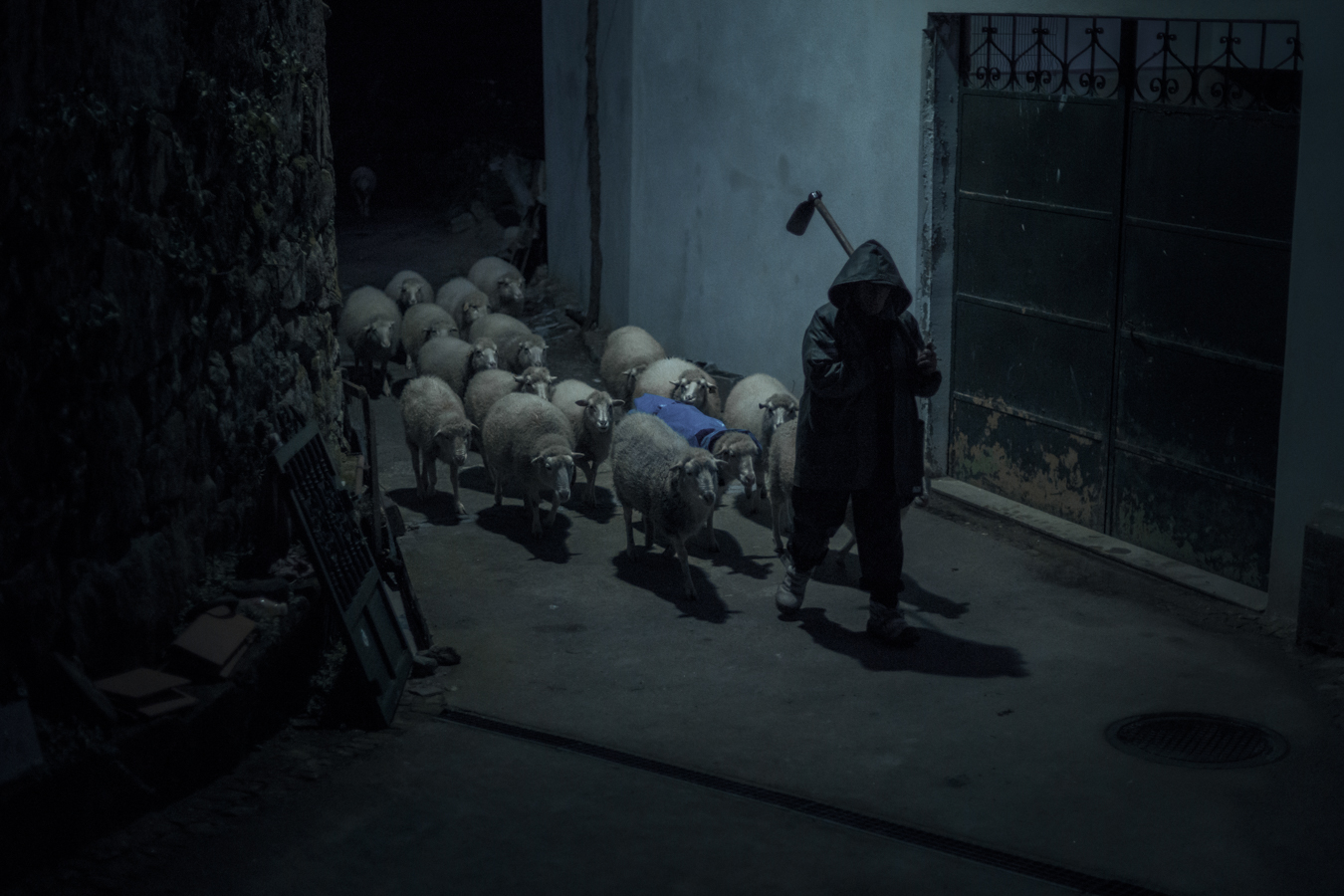
José Pérez in the village of Puxedo, Lobios (Ourense), walking down a dark street with their sheep. “The farm doesn’t give anything, I have it because I’ve had it all my life”. The progressive loss of importance experienced by the primary sector has much to do with the culture of smallholdings and a complicated orography to develop the current model of intensive production, which feeds the insatiable market of macro-production and overproduction.

José Gonzalo, 67, and Inés Grova, 57, pose for a photograph in the cemetery of Santa Marta de Ribarteme, in As Neves (Pontevedra).
The feast celebrates the victory of life over death. The origins of the are unclear, but can be linked to the poverty and isolation of villages around this region.
The funeral march, which dates to medieval times, is an example of both pagan and religious fervor in Galicia, where legends abound about the healing powers of local witches, or meigas.
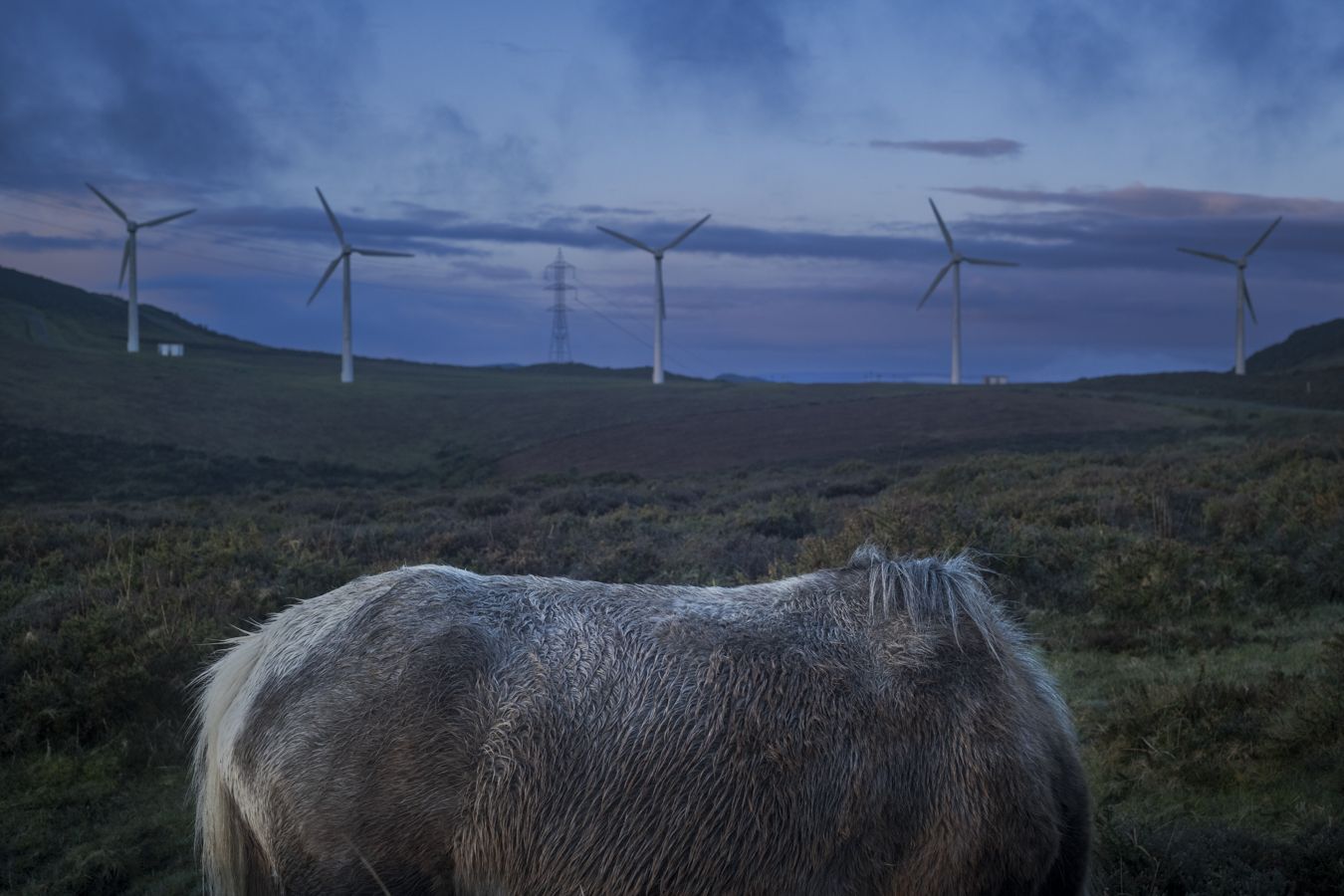
A wild horse in front of the wind turbines at a wind farm in Muras (Lugo). The municipality of Muras in Lugo, with a population of 600, has the most wind turbines in Galicia. It has a total of 20 wind farms and 381 wind turbines spread across its entire area.
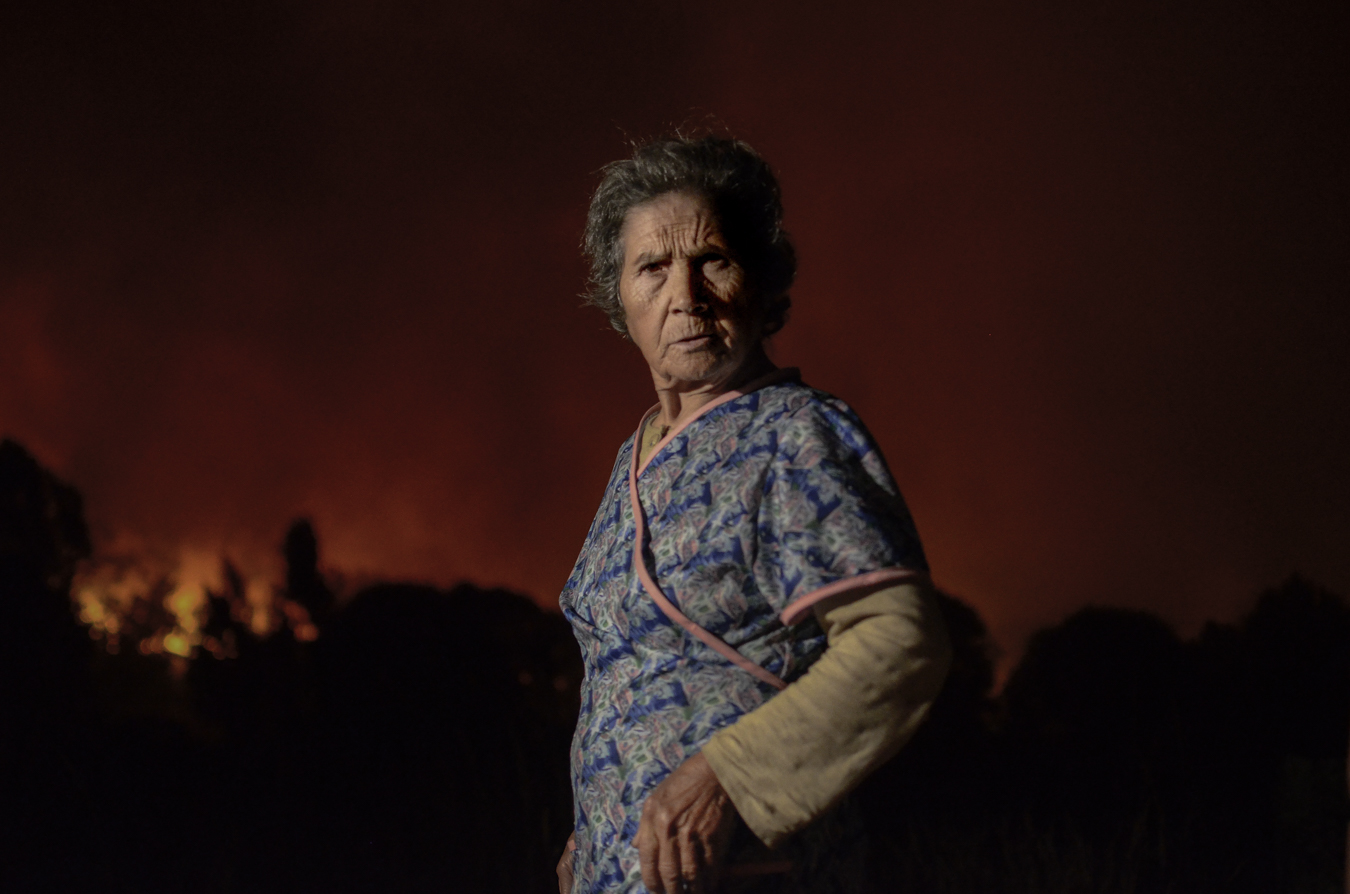
Maruja Rodríguez, 76, stands in front of the flames of a forest fire near to the village of Toubes in municipality of San Cristovo de Cea, Ourense, northwestern Spain, Aug. 18, 2013. Forest fires that happened at night are more difficult to control due to the impossibility of action by the aerial means.
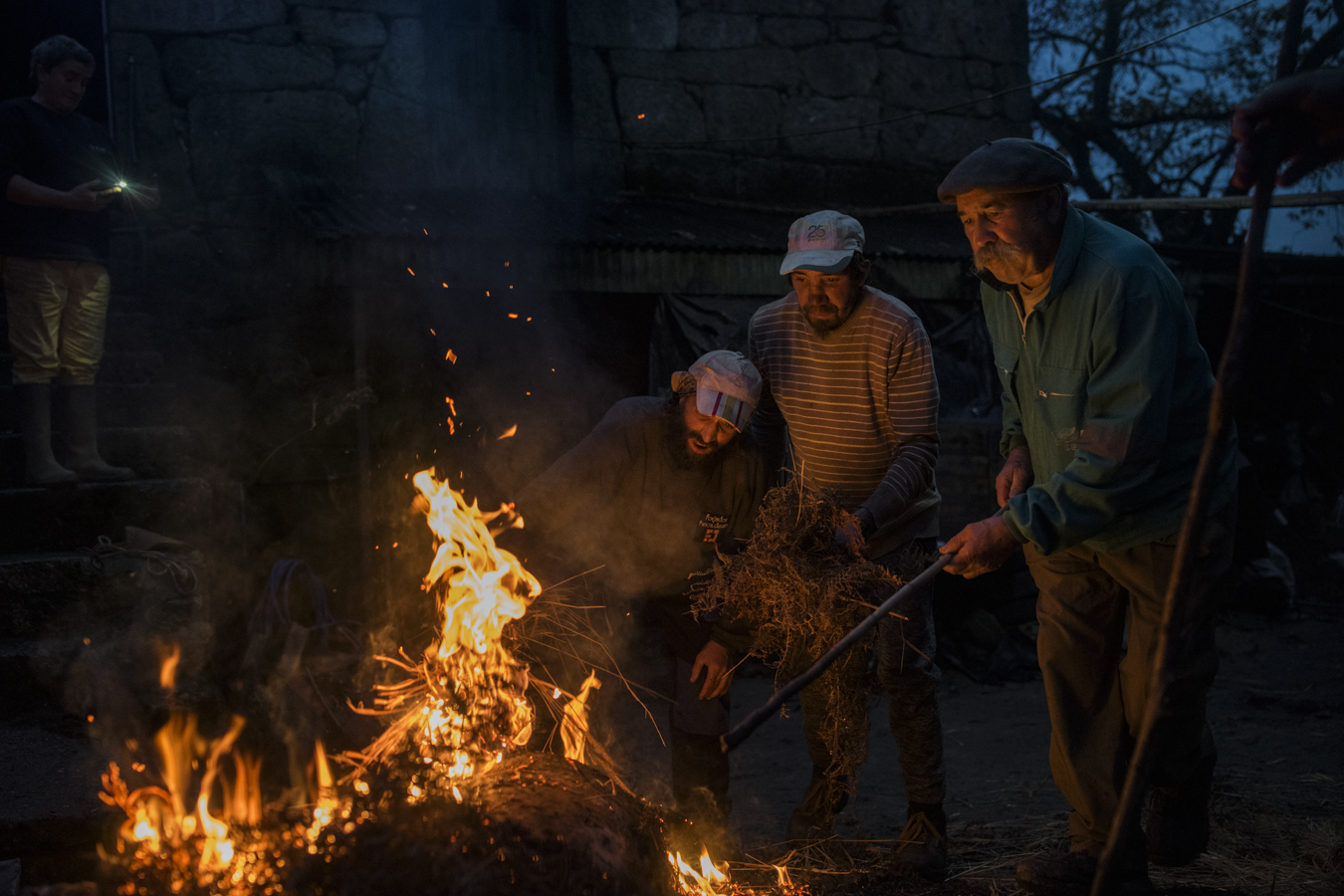
José Gonzalo, 67, and Inés Grova, 57, accompanied by his two sons, burns the pig’s skin using brushwood during the traditional pig slaughter in the village of A Estrema, As Neves, Pontevedra, in the northwest of Spain. The pig slaughter is an ancestral practice of great importance in rural Galician communities, not only as a primary source of food for families throughout the year but also as a social event that strengthens community ties and preserves traditions passed down from generation to generation.
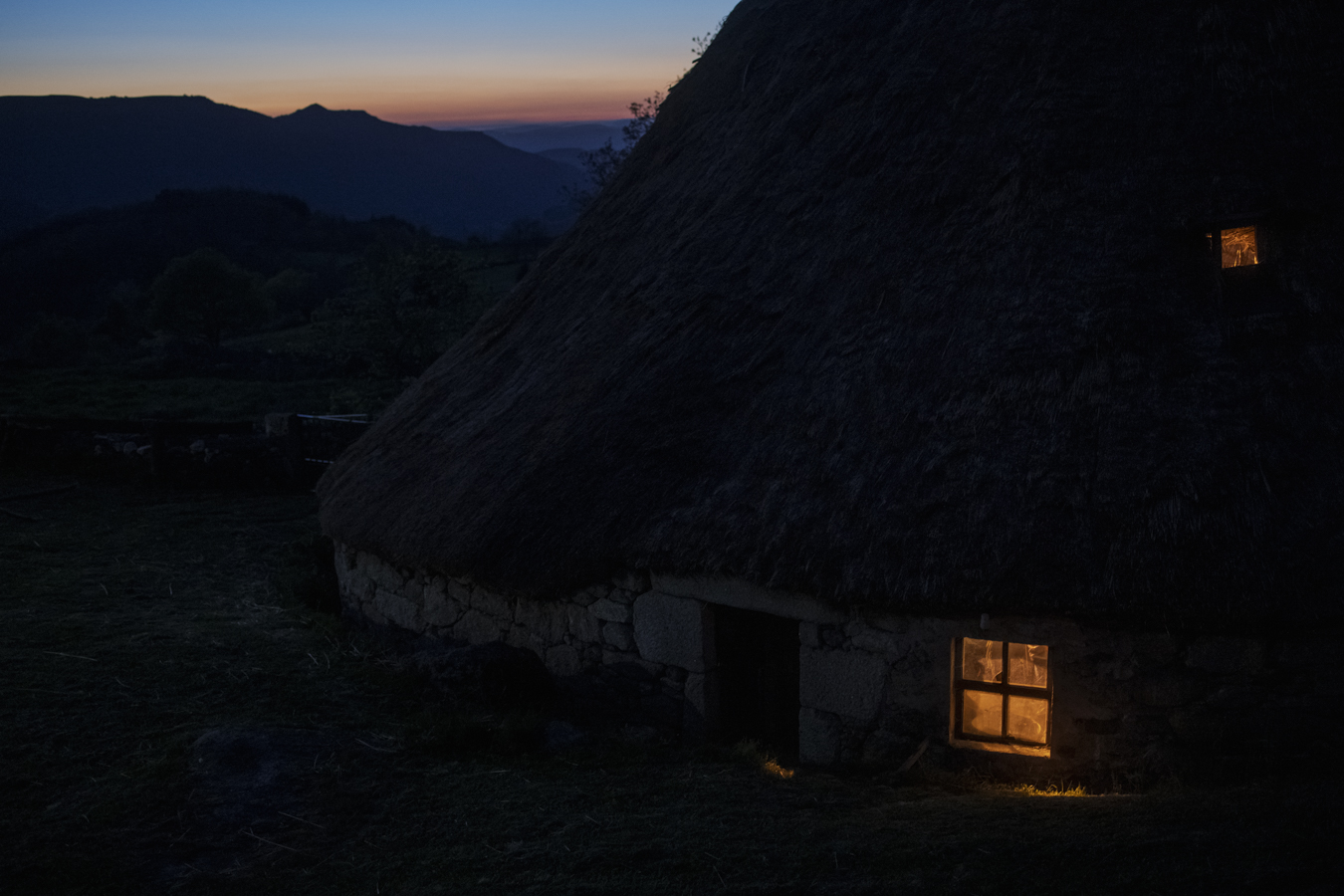
In Piornedo, Lugo, northwest of Spain, a village of about 25 inhabitants, the palloza of Casa Perdigón leads a project aimed at preserving these types of Galician constructions, classified as Assets of Cultural Interest (BIC). In response to the residents’ complaints about the lack of public resources for its maintenance, the Teitos de Piornedo association, created a few years ago by a group of local women, works on cultivating rye to preserve the traditional thatched roofs and learn how to restore these coverings. Projects and popular initiatives to make maintenance, innovation, and life possible in a void full of hope.